May 2018
Honoring Yesterday – Protecting Tomorrow
Vol. 49, No. 5
May Calendar of Events
Thurs., May 10, 9:30am
RESDC Board of Directors Meeting
8825 Aero Drive, Suite 205
Tues.-Fri., May 15-18
SACRS Conference, Anaheim
Mon., May 28
Memorial Day
RESDC Office and SDCERA Office closed
July 31, 2018 at 1:10 PM
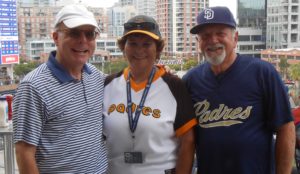 RESDC members will attend a game at beautiful Petco Park on July 31 as the Padres take on the visiting San Francisco Giants. More Information →
RESDC members will attend a game at beautiful Petco Park on July 31 as the Padres take on the visiting San Francisco Giants. More Information →
![]() View the NETWORK
View the NETWORK
as a printable PDF
Are you on social media?
Stay connected with us!
![]()
![]()
![]()
Quote of the Month
“I can’t change the direction of the wind, but I can adjust my sails to always reach my destination.”
▪ Jimmy Dean
President’s Message
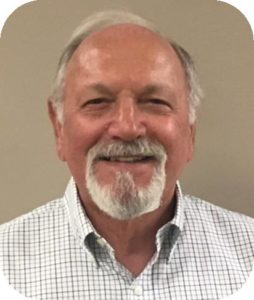
By John J. McTighe
I want to start off my column this month by extending greetings to all our new members who may be receiving The NETWORK for the first time. There was an unusually large number of people retiring from the County at the end of March so they could take advantage of the 3% cost-of-living adjustment this year. Our Executive Director, Mark Nanzer, and I attended many SDCERA retirement seminars in January, February, and March to inform those who were getting ready to transition from county employees to retirees, about RESDC and all the benefits we have to offer to retirees.
One of the benefits of RESDC membership is the number and variety of events we hold that give members the opportunity to see fellow retirees and have fun. In April, we added to that with our first ever “Roundup” held at the Black Angus on Friars Road in San Diego. It was great getting to see and chat with some of you at this fun event. I look forward to seeing more of you at future Roundups.
We have two other social opportunities coming up that you might be interested in attending. Our annual Flag Day Luncheon is on June 14th. We are returning to the Ronald Reagan Community Center in El Cajon after a two-year absence while the facility underwent renovation. This is a great opportunity to catch up with some of your former co-workers, have some good food and enjoy patriotic entertainment. Then in July, for those with a penchant toward baseball, we are hosting our annual RESDC Day at the Padres. This year, our San Diego Padres are playing the San Francisco Giants on July 31st at 1:10 PM. I’m looking forward to seeing many of you there. Having grown up in the Bay Area rooting for the Giants, but switching my loyalty to the Padres many years ago, this will be a special treat for me. We are again on the Skyline Patio with a great aerial view of beautiful Petco Park. The $48 ticket price includes a ballpark buffet from one hour before the first pitch until the seventh inning. I hope to see you there.
In March, the RESDC Board of Directors adopted a Code of Ethics Policy to provide RESDC leadership with guidelines for making ethical choices and to ensure that there is accountability for those choices. I believe it is now more important than ever that our organization have such a clear statement of expected ethical behavior. We live in a time when it is hard to trust that organizations and institutions are functioning in a proper and aboveboard manner. Your RESDC Board is committed to putting the good of our members ahead of any personal gain and we want to assure that such ethical conduct continues.
The semi-annual California Retired County Employees Association (CRCEA) conference was recently held in Santa Barbara. RESDC was well represented at the meeting. Former RESDC Board Member and current SDCERA Board Member Skip Murphy is the President of CRCEA, and RESDC Secretary Carlos Gonzalez is CRCEA Treasurer. Board Member and former President George Shoemaker is the Chairman of the CRCEA Retirement Security Committee. I was part of a panel presentation on the first day of the conference entitled “Building Better Associations.”
The intent of the panel was to share with the 19 other county retired employee associations things we do that make our association particularly good for our members. The two things I focused on were the decision and process RESDC followed to establish the Executive Director position, and our Retirement Security Advocacy Plan. We are ahead of all the other associations in both of these areas and I wanted to share our experiences so that others can benefit.
County Supervisors Ron Roberts and Bill Horn will be termed out at the end of this year, so we will be seeing two new faces on the Board of Supervisors in January 2019. There will be a primary election in June, with the top two vote-getters in each district facing off in the November General Election. While RESDC by policy does not endorse any candidates for public office, we do want to keep our members informed about who is running and what they think about our defined-benefit retirement. To that end, we have sent a questionnaire to each of the candidates asking for their response concerning several pertinent issues affecting county retirement. Because of the number of candidates running, we will not be able to publish the responses in next month’s NETWORK, but we will post the responses we receive on our website www.resdc.net as we get closer to the June primary. We will send out an email blast to all our members for whom we have email addresses letting you know of the availability of that information. If you are not already on our email list, please respond to resdc@resdc.net with a request to add your name. ◾
U.S. Health Care: Costs and Performance
By Stan Coombs
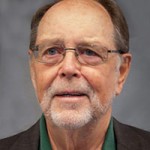 In late 1961, a friend who we’ll call Charlie, was suffering discomfort and dropped by a doctor’s office he had noticed on the way to and from college classes. Charlie hadn’t been there before, but was immediately ushered in. The doctor diagnosed a slight infection and wrote a prescription.
In late 1961, a friend who we’ll call Charlie, was suffering discomfort and dropped by a doctor’s office he had noticed on the way to and from college classes. Charlie hadn’t been there before, but was immediately ushered in. The doctor diagnosed a slight infection and wrote a prescription.
Twenty minutes later, Charlie paid $12.50 for the services and left. He filled the prescription, and within days the symptoms disappeared. Charlie never saw the doctor again.
Several months ago, I visited my personal physician for a minor checkup, in the offices of a large HMO. She asked a few questions, recorded the answers on a computer monitor, and invited me to stop by the lab to have blood drawn for a simple test. I was out within 20 minutes.
When I received the monthly statement of services, I learned the HMO had billed the plan $225 for the visit, not including the lab tests.
That spread in costs between Charlie’s experience and mine should surprise no one. 1961 was half a century ago. Inflation alone has made 2018 a different financial world. But, why is the difference so extreme? That’s a 1,700% increase, and according to the Bureau of Labor Statistics, CPI Inflation Calculator, U.S. consumer prices increased about 732% over that 57 years.
Better not to depend on anecdotes. According to The Balance, a personal finance website using figures from The Centers for Medicare and Medicaid Services, and The California Health Care Foundation, total U.S. health costs totaled $3.2 trillion in 2015 vs. $27.2 billion in 1960. That’s an 11,665% increase.
More startling, the Organisation for Economic Co-operation and Development reports U.S. health spending to be $9,892 per capita in 2016, nearly one-and-a-half times the average per capita health spending of the 35 highest spending countries, exceeding Switzerland, the next highest spender, by 30%.
What do we get for that?
The U.S. health system relies on company-sponsored private health insurance, plus public Medicare and Medicaid programs. That insurance coverage is critical to consumers, but also provides the wherewithal for health providers to raise prices, argues financial commentator Kimberly Amadeo. That explanation seems particularly applicable in certain periods. Spending increased an average of 8.9% annually between 1960 and 1965, and an average of 11.9% between 1966 and 1973. Amadeo also describes seven periods between 1960 and 2003, when, she says, government policies encouraged price increases.
France and Japan have addressed rising health costs. Both use a common fee schedule requiring similar rates for most patients. In the U.S., rates depend on the kind of insurance a patient has. Both France and Japan respond quickly when specific treatment costs begin to exceed budgeted levels, lowering rates for that service. U.S. rates are often statutory.
The service burden is also increasing. Amadeo and others cite “an epidemic of preventable, chronic diseases” as also causal; heart disease, cancer, chronic obstructive pulmonary disorder and stroke. The National Center for Health Statistics adds Alzheimer’s, Diabetes, Influenza and kidney disease to that list.
Yet, U.S health system performance seems mediocre. The World Health Organization evaluated 191 national systems in 2000, including the U.S. Using specific performance indicators, they rated the U.S. system 37th out of the 191 countries, behind all the wealthy countries, plus San Marino, Malta, Oman, Morocco, Chile and Costa Rica.
Articles in The New England Journal of Medicine placed us in 39th place among world nations for infant mortality, 43rd for adult female mortality, 42nd for adult male mortality and 36th for life expectancy, in 2006.
The Commonwealth Fund compared 2016 U.S. health care performance with ten other high-income countries: Australia, Canada, France, Germany, Netherlands, New Zealand, Norway, Sweden, Switzerland and the UK. They measured U.S. performance in Care Process (5th place), Access (11th and last place), Administrative Efficiency (10th place), Equity (11th place), Health Care Outcomes (11th place), and Overall Policy (11th place).
And then Dr. Eric Schneider writes in The New England Journal of Medicine in 2017, “Despite offering some of the most specialized, technically advanced treatments. . .U.S. health care fails to achieve the level of performance. . .of other high income countries.” “The goal of a high-performing health care system. . . is to deliver care that improves the health of its individuals and populations.”
Schneider suggests the U.S. first confront its lack of full access to health care. Comprehensive, affordable coverage is fundamental, he says. The U.S. must also clean up its administrative inefficiency. Patients and professionals are baffled by the complexity of obtaining care and paying for it. And, the U.S. must improve the nation’s social safety net, so that stable housing, educational opportunities, nutrition and transportation reduce the demand for emergency, hospital and long-term care services.
One would think. . . ◾
Pension Facts
A Full Public Service Career Can Be Worth $100K Pension
Pension Facts at a Glance
3,692,325
The number of 2016 active and retired public worker salaries listed on the “Transparent California” website for state agencies, cities, counties, schools and other local government special districts. Seems like a significant block of potential voters who might object to ballot measures eroding public pensions.
By Chris Heiserman, Director
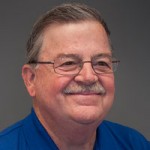 It would have been almost impossible to miss the recent spate of media headlines around California proclaiming that the ranks of public sector retirees taking home six-figure pension checks have escalated rapidly in recent years. This is the latest strategy by public pension opponents in their campaign against reasonable retirement security for government workers.
It would have been almost impossible to miss the recent spate of media headlines around California proclaiming that the ranks of public sector retirees taking home six-figure pension checks have escalated rapidly in recent years. This is the latest strategy by public pension opponents in their campaign against reasonable retirement security for government workers.
Here’s a headline about the statewide retirement fund serving hundreds of thousands of active and retired education personnel: “CalSTRS ‘$100k club’ has nearly doubled over the past five years, membership now stands at over 13,500.” Another headline from the San Diego Union Tribune says: “$100k-plus pension for San Diego, county jobs on the rise.” In this March, 2018 article the reporter describes city and county pension systems’ data, as well as information about retirees in the “$100K club” in both CalSTRS and CalPERS (the nation’s biggest public pension plan serving 1.9 million workers from state and local government, and special district agencies).
The point of this exercise is apparently to suggest that high-salaried public employees are enjoying “excessive” retirement benefits and that this “largesse” is blossoming out of control. It’s interesting that one of these supposedly egregious examples is a former city manager in San Diego County who retired in 2004 after more than 38 years of CalPERS service. His final salary was reportedly $257,000 and his pension is now apparently $306,000.
So, for 38 years a portion of this public employee’s pay was deposited with CalPERS, along with a similar or greater contribution from his employer(s). With so many service years he was undoubtedly eligible for his full salary at retirement, and with annual cost of living increases for more than a dozen years, the math seems about right.
What public pension detractors are trying to do is use the substantial pension checks of long-serving and well-paid public managers, police and fire officials, department heads, public sector lawyers and physicians, engineers and other highly educated professionals to focus citizens and taxpayers on the small percentage of the highest paid retirees. Just like the members of the “$100K club”, the vast majority of the hard-working public servants in California contribute some of every pay check to their pension plan. Those deposits are regularly at least matched by their employer and pooled retirement funds are professionally managed and invested to cover future benefit obligations.
In the Fiscal Year ending June 30, 2017, 61% of the dollars paid to CalPERS’ retirees came from investment earnings; 26% was contributed by employers; and 13% came from workers. SDCERA distributions to retirees follow a similar shared pattern, with more than half derived from the fund’s investment earnings.
Headlines trumpeting the rise of “$100K club” membership in every region of the state are mean-spirited and petty. They insinuate that civil servants who have devoted 25-30 (and often more) years to a career in public service are being compensated too much. They highlight the top salaries to infer the false narrative that pensions are too expensive and are taking too big a bite out of government budgets. Their ultimate objective is to erode or erase defined benefit public retirements in favor of 401(k) savings accounts that reduce the cost to employers and provide a significantly lower nest egg to employees at the end of their working career. They suggest public workers should be treated like their private sector counterparts, facing retirement years with inadequate savings, and maybe some social security benefits.
Thank you for your service?
And what about those “$100k club” members? They didn’t get magically inducted into the club by invitation – they earned it. ◾
Recent Events
- National Institute on Retirement Security releases new report: “Millennials and Retirement: Already Falling Short.” A new report finds a deeply troubling retirement outlook for the Millennial generation. Most Millennials have nothing saved for retirement, and those who are saving aren’t saving nearly enough. The report indicates that many factors are contributing to this generation’s retirement savings challenges – from depressed wages to the lack of eligibility to participate in employer retirement plans. This report is available at: https://www.nirsonline.org/.
- Who Is The Retirement Security Initiative? Armed with a cunningly deceptive name, the so-called Retirement Security Initiative (RSI) has been one of the most active opponents of public pensions in recent years. RSI is funded by John Arnold, an Enron-billionaire who has spent up to $50 million of his own fortune on a nationwide effort to gut retirement security, and led by Chuck Reed, the former mayor of San Jose who led the attacks on pensions in that city. While failing repeatedly to get a measure placed on the ballot to gut public pensions throughout California, Reed has set up shop at RSI where he now leads a nationwide crusade against public pensions. To learn more, visit: https://protectpensions.org/2018/03. ◾
KPBS Radio Reading Service
 The KPBS Radio Reading Service broadcasts readings of books, magazines, and local newspapers, including the San Diego Union-Tribune and Los Angeles Times. Eligible listeners, such as those with macular degeneration or other sight impairments, can listen 24 hours a day, seven days a week, over a private audio channel using a specialized radio, or online via webstream. Broadcasts are provided by more than 100 local volunteers.
The KPBS Radio Reading Service broadcasts readings of books, magazines, and local newspapers, including the San Diego Union-Tribune and Los Angeles Times. Eligible listeners, such as those with macular degeneration or other sight impairments, can listen 24 hours a day, seven days a week, over a private audio channel using a specialized radio, or online via webstream. Broadcasts are provided by more than 100 local volunteers.
Although this services is free, a one-time $150 donation is requested to help cover costs. No one will be denied the service due to financial hardship. To learn more, or to apply to obtain a specialized receiver, call (619) 594-8170 or visit: www.kpbs.org/radio/reading-service. ◾
San Diego County Credit Union

Summer is right around the corner and it’s not too late to start saving for your next vacation. San Diego County Credit Union’s products and services make saving easier than ever. It could be as simple as setting up a new savings account, using our 30,000 surcharge-FREE CO-OP ATMs, refinancing to a lower interest rate or saving money on postage by paying your bills online.
Visit www.sdccu.com, call (877) 732-2848, or come into any of our convenient branch locations. ◾
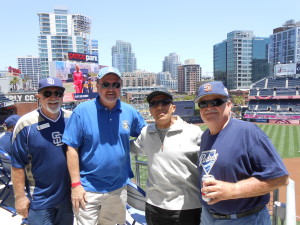 Take Me Out to the Ballgame
Take Me Out to the Ballgame
By Chris Heiserman, Director
What could be better than baseball under the summer sun in downtown San Diego? The Padres stumbled out of the starting gate in the National League West, but they have excellent young players and are fun to watch.
RESDC Day at the Padres at Petco Park on Tuesday, July 31st against the San Francisco Giants should be a good contest between division rivals. Throw in all-you-can eat hot dogs, popcorn, peanuts and soft drinks on the spacious Skyline Patio with awesome views of the game and the city and you will lose yourself in America’s favorite pastime for a few wonderful hours.
Come on out and enjoy a beautiful summer afternoon of baseball and camaraderie with fellow retirees. Take in the sights, chow down on ball park fare, salute the American flag and sing during the seventh inning stretch. Maybe we will even win. Go Padres! ◾
 RESDC Day at the Padres
RESDC Day at the Padres
Tuesday, July 31, 2018 at 1:10 pm
San Diego Padres vs. San Francisco Giants
Ticket price is $48.00 per person. Petco Park is located at 100 Park Blvd., San Diego, 92101.
Tickets include a pre-game buffet with standard ballpark fare, served one hour before first pitch until one hour after first pitch, and soft drinks served from one hour before first pitch through the seventh inning.
Registration: Registration forms and payment must be received in the RESDC office by Thursday, July 26. Tickets will be mailed approximately two weeks prior to the event date.
 Register by Mail: Fill out the registration form, make a check payable to RESDC for $48 per person and mail both to RESDC, 8825 Aero Dr., Suite 205, San Diego, CA 92123.
Register by Mail: Fill out the registration form, make a check payable to RESDC for $48 per person and mail both to RESDC, 8825 Aero Dr., Suite 205, San Diego, CA 92123.
Register Online: Click here and follow the steps. You will need to use the email associated with your member account. Click “Add guest” to add additional registrants for $48 each. To pay for yourself and guests, click “Pay Online” and pay with credit card.
Register by Phone: Call the RESDC Office at (619) 688-9229 during our hours of 9 am – 2 pm Mon-Fri.
For questions or assistance registering, contact us at (619) 688-9229 or resdc@resdc.net. ◾
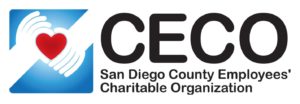 CECO Awards 2018 Grants
CECO Awards 2018 Grants
By CECO President, Mavette Trinidad Sadile
On March 15th, 2018, the San Diego County Employees’ Charitable Organization (CECO) awarded grants to 100 local non-profit programs and the Employee Crisis Fund for a total of almost $168,000. Grant recipients included: Alpha Project for the Homeless, Crisis House, Dictionary Hill Open Space Advocates, Mama’s Kitchen, Operation Samahan, Inc., Renewing Life Senior Transportation, Special Delivery San Diego, and Urban Corps of San Diego County. For a full list of grant recipients and CECO’s 2017 Annual Report, see www.sdceco.org.
CECO’s 62-year tradition of lending a hand is made possible by the generosity of County employees and retirees. On behalf of the CECO Board of Directors, THANK YOU for your continued support! We hope that you are proud of our collective efforts to serve our local community by giving a level of financial support to programs that seek to make San Diego a healthy, safe, and thriving region.
To start your CECO contribution, download the Request for County Employees Charitable Organization (CECO) Form at:
http://www.sdcera.org/forms_publications_retired.htm (deduction from monthly benefit) or email: sdceco@scounty.ca.gov (one-time contribution). ◾
Aging Summit 2018
Since 1998, Aging & Independence Services has hosted a biennial Aging Summit to bring professionals, older adults, and service providers together for a day of education and discussion on timely issues in the field of aging. Aging Summit 2018 will be held on Thursday, June 28 at two locations: the Town and Country Convention Center in Mission Valley, and the California Center for the Arts, Escondido.
Registration details are posted on www.AISevents.org. Call (800) 510-2020 for more information. ◾
Bits and Pieces
Paul Cornell and his wife, Gwendolyn, moved from Arizona to Missouri in March. Paul retired from the Sherriff’s Department after 13 years with the county. This was their 24th move in 68 years of marriage! Paul was career Air Force as a flying radio operator before working for the county.
Carolyn Albert celebrated her 90th birthday in March! She and her husband, Scott, were treated to a nice dinner party at her daughter’s home with family and friends. Carolyn retired from the Health Department in 1987 after many years with the county. She keeps busy volunteering at her church and a local hospital. ◾
 Save the Date
Save the Date
Special RESDC General Membership Meeting
and RESDC Roundup II
Tuesday, July 24
San Diego Oasis – Tour and Presentation
RESDC members are invited to join us as we visit San Diego Oasis, located in the Grossmont Shopping Center in La Mesa. This is a great opportunity to learn more about Oasis programs, classes, and volunteer opportunities.
Following the presentation, join us for our second-ever RESDC Roundup social mixer at BJ’s Restaurant across the parking lot from Oasis. You don’t need to attend the meeting to attend the social, and vice-versa.
We hope to see you at one or both of these exciting events! Make sure to stay tuned to The NETWORK for more details.
DATE: Tuesday, July 24, 2018
TIME: Presentation at Oasis at 1:30 p.m.
Roundup approximately 2:30 – 4:30 p.m.
LOCATION: Oasis is in Suite #228 at Grossmont Shopping Center
5500 Grossmont Center Drive, Suite #228, La Mesa, California, 91942. ◾
RESDC Evening at the Theatre
March 21, 2018
Our second RESDC Evening at the Theatre event was a great success! Members enjoyed the musical A Little Night Music at Cygnet Theatre in Old Town. This year, our members joined Associate Artistic Director Rob Lutfy on the patio for a pre-show casual chat to learn more about the show. ◾
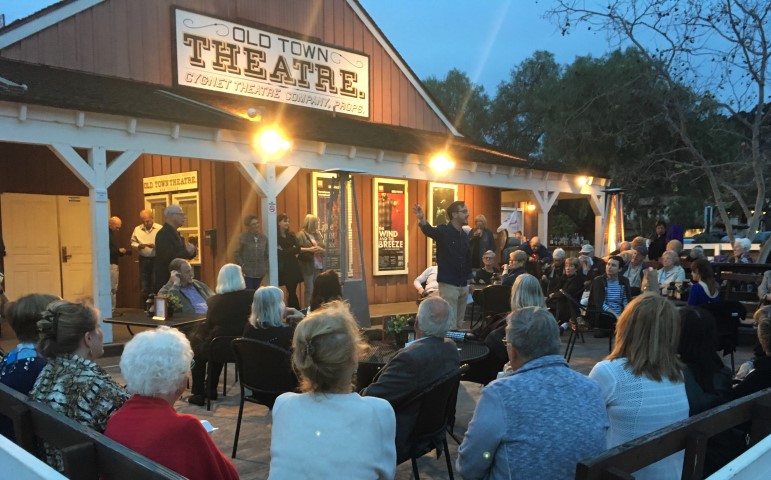

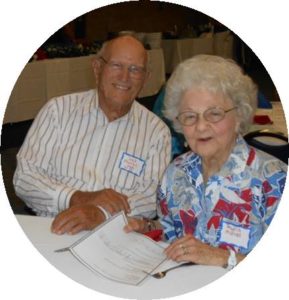 Flag Day Luncheon 2018
Flag Day Luncheon 2018
Thursday, June 14, 11:00am
Ronald Reagan Community Center
We are pleased to invite you to our annual Flag Day Luncheon on June 14, 2018. This year we are returning to the newly renovated Ronald Reagan Community Center in El Cajon.
Our Flag Day Luncheon is a festive celebration commemorating the adoption of the flag of the United States. The event will kick off at 11:00 am with a social half-hour, followed at 11:30 am by a brief program led by RESDC President John McTighe. Entertainment will be provided by the California Note Catchers, a nonprofit women’s barbershop harmony chorus. We’ll enjoy a buffet style lunch at approximately 12:15 pm, with ham, roast turkey, rosemary potatoes, green beans almandine, salads, desserts, and beverages. This is an indoor event with ample free parking on both sides of the center.
When: Thursday, June 14, 2018, 11:00 am
Where: Ronald Reagan Community Center,
195 E Douglas Ave, El Cajon, CA 92020
Cost: $12 per person
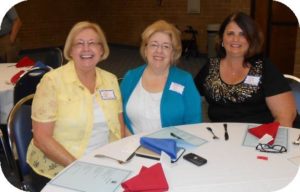 Registration: Registration forms and payment must be received in the RESDC office by Friday, June 8. Name badges and opportunity drawing tickets should be picked up at the check-in table at the luncheon. They will not be mailed.
Registration: Registration forms and payment must be received in the RESDC office by Friday, June 8. Name badges and opportunity drawing tickets should be picked up at the check-in table at the luncheon. They will not be mailed.
Register by Mail: Fill out the registration form, make a check payable to RESDC for $12 per person and mail both to RESDC, 8825 Aero Dr., Suite 205, San Diego, CA 92123.
Register Online: Click here and follow the steps. You will need to use the email associated with your member account. Click “Add guest” to add additional registrants for $12 each. To pay for yourself and guests, click “Pay Online” and pay with credit card.
Register by Phone: Call the RESDC Office at (619) 688-9229 during our hours of 9 am – 2 pm Mon-Fri.
Directions to Ronald Reagan Community Center: Located one block south of E. Main Street, El Cajon, directly off Magnolia Ave. Take I-8 to Magnolia off-ramp, go south to E. Douglas and turn left.
For questions or assistance registering, contact us at (619) 688-9229 or resdc@resdc.net. ◾
Welcome New Members
Michael J. Barletta – Sheriff
Yavonka M. Burks* – Public Works
Steven J. Carroll – Public Defender
Vikki T. Denslow* – Environmental Health
Lisa M. Duchow – Probation
Anne-Marie Jewel – Board of Supervisors
Mina Lovrich-Kerr – Environmental Health
Doris B. Neil
Eric A. Nelson* – Public Works
Holly Nottingham-Adams – Superior Court
Cristi M. Page* – Public Works
Robert A. Pennisi – Registrar of Voters
Paula J. Roach – County Counsel
Walter T. Steffen – Probation
*Associate Member
The surviving Spouse of a member is eligible for RESDC membership. For enrollment assistance, please call: (866) 688-9229. ◾
NETWORK is the official monthly newsletter of the Retired Employees of San Diego County, Inc. (RESDC), a private non-profit organization.
The information printed in the NETWORK is believed to be from reliable sources. However, no responsibility is assumed by the NETWORK for inaccuracies contained herein.
Business and Inquiries: Business matters and address changes may be recorded on our voicemail at any time, call (866) 688-9229. Please spell your name so the correct member record can be located.
Retired Employees of San Diego County, Inc.
8825 Aero Drive, Suite 205 | San Diego, CA 92123
Office Hours: 9 a.m. to 2 p.m. Monday through Friday
TELEPHONE: (866) 688-9229 Toll Free
FAX: (619) 688-0766
E-MAIL: resdc@resdc.net

